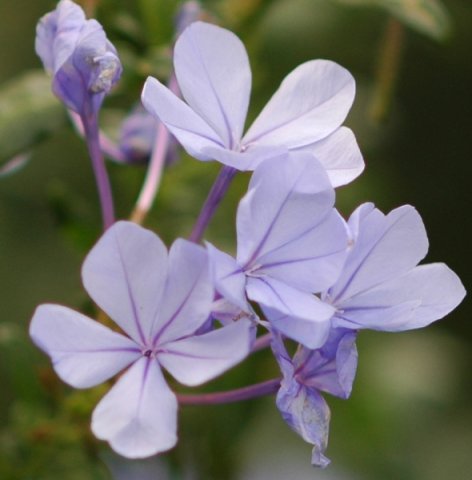Plumbago auriculata

Author: Ivan Lätti
Photographer: Johan Wentzel
Plumbago auriculata, commonly the Cape leadwort, in Afrikaans the blousyselbos (blue leadwort) and previously scientifically P. capensis, is an evergreen shrub that sometimes scrambles in untidy fashion and reaches heights around 2 m, occasionally 4 m. The brittle stems are much-branched.
The oblong to obovate leaves are eared at the base. The specific name, auriculata, is derived from the Latin word auricula meaning the external ear, referring to this leaf feature. The thin blades are short-petioled, dark green above and grey green below, the margins entire.
The sky blue to pale blue flowers grow in stem-tip spikes, sometimes covering thriving shrubs almost entirely in bloomtime, which is summer and autumn. The salver-shaped corollas are long-tubed, sticky-haired and about 2 cm in diameter where the lobes spread.
The species distribution is widespread in South Africa, most common in the Eastern Cape and KwaZulu-Natal, but recorded in all provinces barring the Northern Cape and Limpopo.
The habitat is diverse scrub, thicket and valley bushveld. The species is not considered threatened in habitat early in the twenty first century.
This is a well-known garden plant in many parts of the world. It does well in full sun, semi-shade and as a hedge plant. Imperial Blue is but one of the widely marketed cultivars (Manning, 2009; Moriarty, 1997; Pooley, 1998; iNaturalist; http://redlist.sanbi.org).

